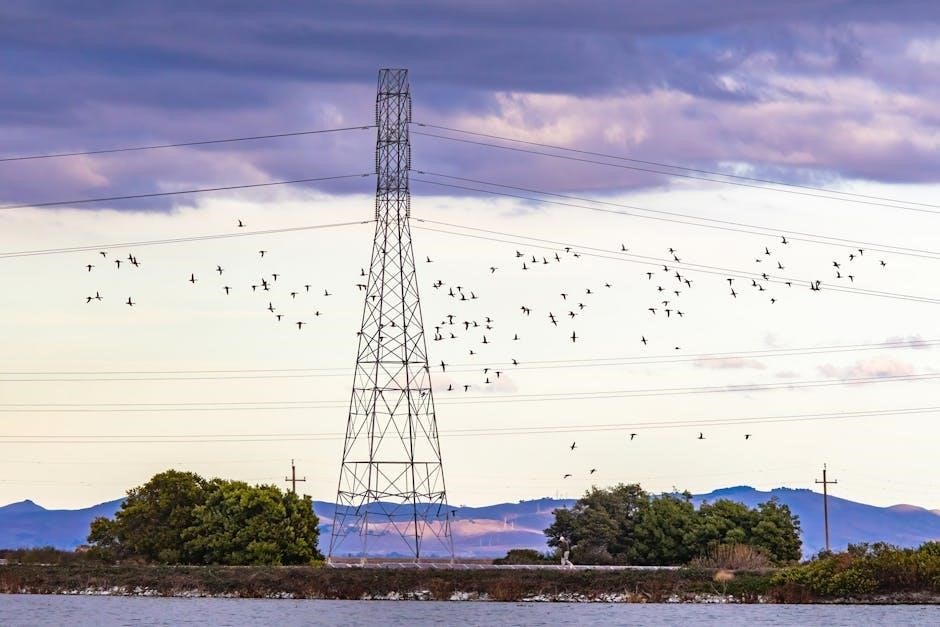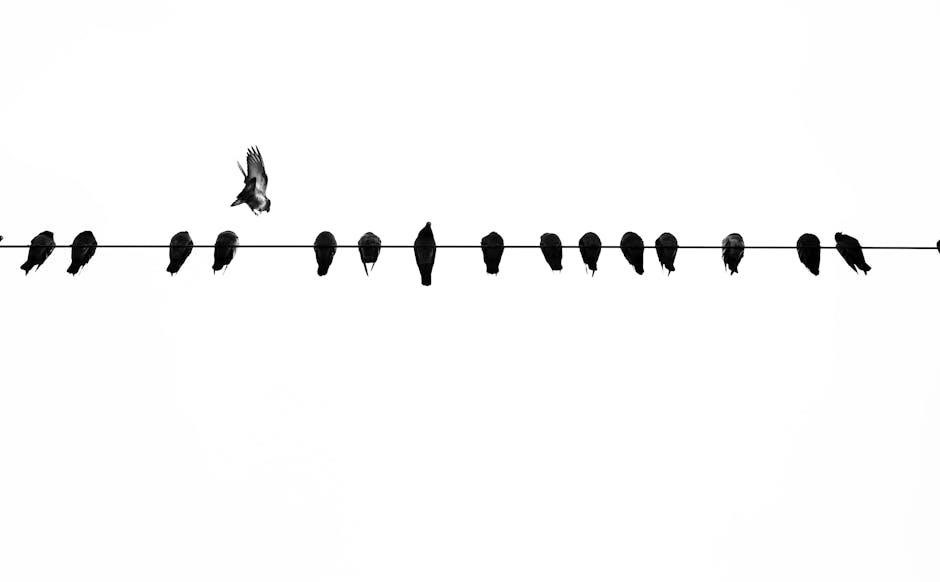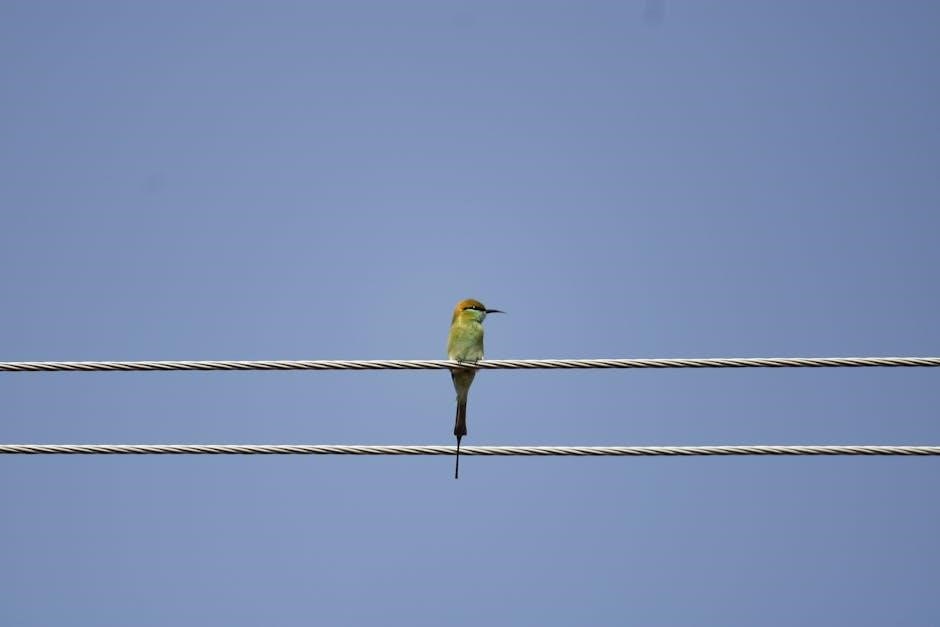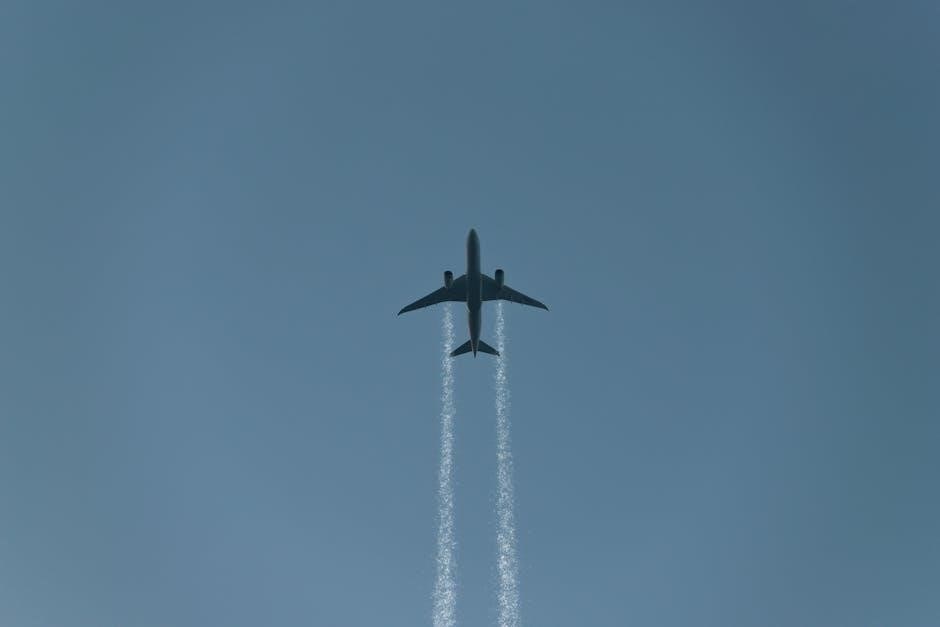
fly line weight guide
Discover the perfect fly line weight for your next fishing adventure. Learn how to choose the right line with our expert guide and tips. Make your fishing easier and more enjoyable!
Choosing the right fly line weight is crucial for balance, casting efficiency, and presentation. This guide helps anglers understand the importance of fly line weight, its impact on performance, and how to select the appropriate weight for their fishing needs, ensuring optimal results on the water.
Overview of Fly Line Weight Importance
Fly line weight plays a critical role in determining casting efficiency, presentation, and overall fishing success. The weight of the fly line is measured using the AFTM (Association of Fishing Trade Manufacturers) scale, which standardizes line weights to ensure consistency across manufacturers. Properly matching the line weight to the rod and fishing conditions ensures optimal performance, as it affects how the line loads the rod and delivers the fly. A line that is too light may fail to cast effectively, while one that is too heavy can result in poor presentation. Understanding the importance of fly line weight helps anglers make informed decisions, enhancing their ability to adapt to various fishing scenarios and improve their overall experience on the water.
Structure of the Guide
This guide is organized into clear sections to help anglers understand fly line weights comprehensively. It begins with an introduction to the basics of fly line weight and its significance. The guide then delves into the AFTM scale, explaining how line weights are measured and classified. Following this, it explores how fly line weight impacts casting performance and presentation. The guide also covers the different types of fly lines, such as floating, sinking, and intermediate lines, and their specific applications. Additionally, it provides tips for selecting the right line weight for various fishing conditions and offers troubleshooting advice for common mistakes. Finally, the guide includes sections on maintenance and advanced techniques to maximize the longevity and effectiveness of fly lines.

Understanding Fly Line Weight Systems
Fly line weight systems are standardized using the AFTM scale, measuring the weight of the first 30 feet of line. Lines are categorized by taper, weight, and buoyancy, such as WF3F (Weight Forward, 3 Weight, Floating), ensuring compatibility with rods and fishing conditions.
AFTM Scale Explanation
The AFTM (Association of Fishing Trade Manufacturers) scale is the industry standard for measuring fly line weight. It determines the weight of the first 30 feet of fly line, excluding the leader. This measurement ensures consistency across different manufacturers, helping anglers match lines to rods effectively.
Each line weight corresponds to a specific grain weight, with higher numbers indicating heavier lines. For example, a 5-weight line weighs between 134-146 grains. This system allows precise selection based on fishing conditions, rod type, and target species, ensuring optimal casting performance and accuracy.
Understanding the AFTM scale is crucial for balancing gear and improving fishing outcomes. It provides a standardized reference point, enabling anglers to choose the right line for their specific needs and environments.
How Fly Line Weight Affects Performance
Fly line weight significantly impacts casting performance, presentation, and overall fishing success. A line that is too light may lack the energy to cast effectively, while an overly heavy line can be difficult to control and may spook fish. The weight determines how the line loads the rod, with proper loading essential for smooth, accurate casts. Heavier lines are better for larger flies, stronger winds, and longer distances, while lighter lines excel in delicate presentations and smaller flies. The wrong weight can lead to poor casting distance, lack of precision, and fatigue. Balancing the line weight with the rod and fishing conditions ensures optimal performance and a more enjoyable fishing experience.

Types of Fly Lines
Fly lines vary by floatation, sink rate, and taper, catering to specific fishing conditions. Floating lines stay on the surface, sinking lines dive, and intermediate lines sink slowly, while shooting heads optimize distance and accuracy in various waters.
Floating Lines
Floating lines are the most popular choice, offering versatility for dry flies and topwater action. Their buoyancy allows for precise presentations and easy mending, making them ideal for surface-feeding fish. These lines are perfect for trout fishing, as they enable delicate casts and natural drifts. Key features include a smooth, consistent floatation and minimal drag. For best performance, regularly clean the line to maintain its buoyancy. Floating lines are a go-to for anglers targeting species like trout, panfish, and bass in shallow or clear waters. Their adaptability to various techniques, such as dry fly fishing or suspended nymphs, makes them indispensable in many fly fishing scenarios.
- Best for surface and dry fly fishing.
- Excellent for precise presentations and mending.
- Regular cleaning ensures optimal performance.
Sinking Lines
Sinking lines are designed to sink beneath the water’s surface, allowing anglers to target fish at various depths; They are ideal for deep-water fishing, where species like salmon, steelhead, or lake trout reside. Sinking lines come in different sink rates, from slow to fast, enabling precise depth control. These lines are particularly effective in cold water or when fish are feeding subsurface. A key advantage is their ability to deliver flies directly to the target zone, increasing the chances of a strike. Regular maintenance, such as cleaning, is essential to maintain their sink rate performance. Sinking lines are a must-have for anglers pursuing deeper-water species or fishing in conditions where surface action is minimal.
- Perfect for deep-water and subsurface fishing.
- Available in varying sink rates for depth control.
- Essential for targeting species like salmon and steelhead.
Intermediate Lines
Intermediate lines are designed to sink partially, typically at a slow, steady rate, making them ideal for fishing just below the water’s surface. These lines are versatile and excel in calm or slightly moving waters, where fish are suspended or feeding near the surface. They provide excellent presentation for nymphs, streamers, and emergers, allowing anglers to target species like trout or panfish effectively. Intermediate lines are also useful in saltwater scenarios, such as chasing bonefish or redfish in shallow flats. Their slow sink rate ensures flies remain in the strike zone longer, increasing the chance of a hookup. Regular cleaning and maintenance are essential to maintain their performance and sink rate consistency.
- Optimal for fishing just below the surface.
- Excellent for nymphs, streamers, and emergers.
- Useful in both freshwater and saltwater conditions.
Shooting Heads
Shooting heads are specialized fly lines designed for distance casting and heavy fly delivery. They are short, heavy segments of line attached to a lightweight running line, allowing for powerful casts and quick turnover. These heads are weighted to AFTM standards but are often heavier than standard fly lines to generate more energy during the cast. They excel in saltwater fishing, where large flies and long casts are common. Shooting heads are versatile and can be used in freshwater for targeting larger species like pike or salmon. Their compact design enables precise presentation, making them ideal for windy conditions or when accuracy is critical. Anglers can customize their setup by pairing different shooting heads with varying running lines for optimal performance.
- Short, heavy lines for distance and power.
- Designed for large flies and long casts.
- Versatile for both freshwater and saltwater use.

Selecting the Right Fly Line Weight
Matching fly line weight to your rod and fishing conditions ensures optimal performance. Consider species size, water type, and wind for the best results.
Factors Influencing Line Weight Choice
Several factors influence the choice of fly line weight, including the target species, water conditions, and wind. Larger species require heavier lines, while smaller fish may be effectively caught with lighter weights. The type of flies used also plays a role, as larger or weighted flies demand more line weight for proper casting. Additionally, the angler’s casting style and skill level can affect line weight selection, with more experienced anglers often preferring lighter lines for precision. Environmental conditions, such as strong winds or deep water, may necessitate a heavier line for better control and reach. Finally, the fish’s behavior and the specific fishing technique being employed, such as nymphing or dry fly fishing, will also guide the appropriate line weight choice. Understanding these factors ensures a balanced and effective setup for any fishing scenario. Using the correct gear and testing different lines on the water can help anglers make informed decisions.
Matching Line Weight to Fly Rod

Matching the fly line weight to the fly rod is essential for achieving balance and optimal performance. Fly rods are designed to handle specific line weights, typically indicated by a rating system such as AFTM (Association of Fishing Trade Manufacturers). The AFTM standard measures the weight of the first 30 feet of fly line, ensuring compatibility with the rod’s design. A line that is too light may not load the rod properly, reducing casting efficiency, while a line that is too heavy can strain the rod and diminish accuracy. Most modern fly rods are designed to work best with a line weight that closely matches their rating, though slight variations can be adjusted for specific fishing conditions. Properly matching the line weight to the rod ensures smooth casting, better control, and a more enjoyable fishing experience. Always refer to the rod’s specifications for the recommended line weight range.

Common Mistakes and Troubleshooting
Common mistakes include overloading or underloading the rod with the wrong line weight, affecting casting performance. Troubleshooting involves adjusting line weight for specific fishing conditions and rod balance.
Overloading or Underloading the Rod
Overloading or underloading the rod with the wrong fly line weight is a common issue that affects casting performance and accuracy. Overloading occurs when a line is too heavy for the rod, causing it to sag and lose precision. Underloading happens when the line is too light, making it difficult to achieve proper distance and control. Both scenarios can lead to poor casting and a less enjoyable fishing experience. To avoid this, anglers must match their line weight to the rod’s specifications, considering factors like fishing conditions and target species. Correcting this involves adjusting the line weight or switching to a rod that better suits the line’s weight. Proper balance ensures optimal casting and effectiveness on the water.
Adjusting Line Weight for Different Conditions
Adjusting fly line weight is essential for optimizing performance in various fishing conditions. In windy conditions, a heavier line improves casting control and distance. For larger or stronger species, such as saltwater fish, a heavier line is necessary to handle the added weight and fight. Conversely, lighter lines are ideal for smaller species like trout in freshwater. Water depth also plays a role; deeper waters may require sinking lines, while surface fishing benefits from floating lines. Seasonal changes, such as colder weather affecting line stiffness, may also necessitate adjustments. While line weight is critical, taper and buoyancy should also be considered. By tailoring the line weight to specific conditions, anglers can enhance casting accuracy, presentation, and overall fishing success, ensuring they are well-prepared for any scenario they encounter on the water.

Maintenance and Care of Fly Lines
Regular cleaning and proper storage of fly lines prevent cracking and extend lifespan. Always dry lines after use and store them in a cool, dry place.
Cleaning and Storing Fly Lines
Proper cleaning and storage are essential for maintaining the performance and longevity of fly lines. Use a mild soap solution and water to gently scrub the line, avoiding harsh chemicals that can degrade the coating. Rinse thoroughly and pat dry with a soft cloth to prevent moisture buildup. Store the line in a cool, dry place away from direct sunlight to avoid UV damage. For longer storage, wind the line neatly onto a spool or reel to prevent kinks and tangles. Regular cleaning and proper storage ensure the line remains buoyant, casts smoothly, and retains its intended weight and performance characteristics. Inspect the line for cracks or damage before each use to maintain optimal fishing results.
When to Replace a Fly Line

Replace your fly line when it shows signs of wear, such as cracks, abrasions, or a dull finish. If the line becomes brittle, develops memory, or loses its buoyancy, it’s time for a new one. Noticeable tangling, kinking, or a significant change in weight indicates degradation. Regularly inspect for damage after use and consider replacing it every 2-3 years or after heavy use. Proper maintenance can extend its life, but eventual replacement is necessary to maintain performance and casting efficiency.

Advanced Techniques for Fly Line Use

Mastering advanced techniques involves expert line handling, precision casting, and customizing your setup for specific fishing conditions to enhance accuracy and performance on the water.
Expert Tips for Line Handling
Handling fly lines effectively requires precision and technique. Adjust your line weight based on fishing conditions and target species to ensure optimal casting and presentation. Use the loop-to-loop connection for easy rig changes, as it is the industry standard and accessible for most anglers. Maintain your line by cleaning and storing it properly to prevent cracks and tangling. Experiment with different tapers to find what works best for your casting style. Practice casting techniques to improve line control and accuracy. Understand the AFTM scale to match your line weight correctly with your rod. Customize your setup for specific fishing scenarios, such as saltwater or freshwater, to enhance performance. By mastering these tips, anglers can elevate their fly fishing experience and achieve better results on the water.
Customizing Fly Line Setup
Customizing your fly line setup allows you to tailor your equipment to specific fishing conditions and personal preferences. Experiment with line weights to balance your rod and improve casting efficiency. Consider taper designs, such as weight-forward or double taper, to suit your fishing style. Choose buoyancy options like floating, sinking, or intermediate lines based on the water depth and species you’re targeting. Shooting heads can be added for distance casting in saltwater or larger rivers. Adjust leaders and tippet to match the line’s performance and the fly size. By fine-tuning these elements, anglers can create a setup that enhances their casting technique and increases their chances of success on the water.
Understanding fly line weight is key to enhancing casting performance and fishing success. Proper selection ensures balance, accuracy, and efficiency, making every cast count on the water.
Key Takeaways
Understanding the AFTM scale is essential for selecting the right fly line weight. Line weight affects casting performance, accuracy, and fish presentation. Floating, sinking, and intermediate lines serve different fishing conditions. Matching the line weight to your rod ensures optimal balance and efficiency. Overloading or underloading can hinder performance, so proper selection is crucial. Regular maintenance, like cleaning and storing lines correctly, extends their lifespan. Customizing your setup with shooting heads or different tapers can enhance versatility. Experimenting with line weights and adjusting for conditions improves effectiveness. Investing in quality lines and understanding their characteristics leads to better fishing outcomes. Always consider species, environment, and technique when choosing your line weight for the best results.
Final Thoughts and Recommendations
Properly understanding and selecting the right fly line weight is vital for a successful fishing experience. Experiment with different weights to find what works best for your rod and fishing style. Maintain your lines by cleaning and storing them appropriately to ensure longevity. For beginners, starting with a versatile weight-forward floating line is recommended. Always consider the species, environment, and conditions when choosing your line. Investing in a high-quality fly line tailored to your needs will enhance performance and overall satisfaction. Remember, small adjustments in line weight can make a significant difference in casting accuracy and presentation. By following these guidelines, anglers can optimize their setup and enjoy a more rewarding time on the water.